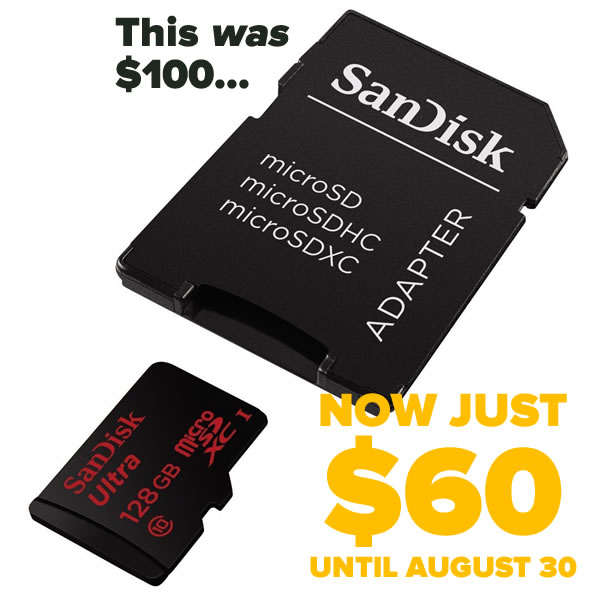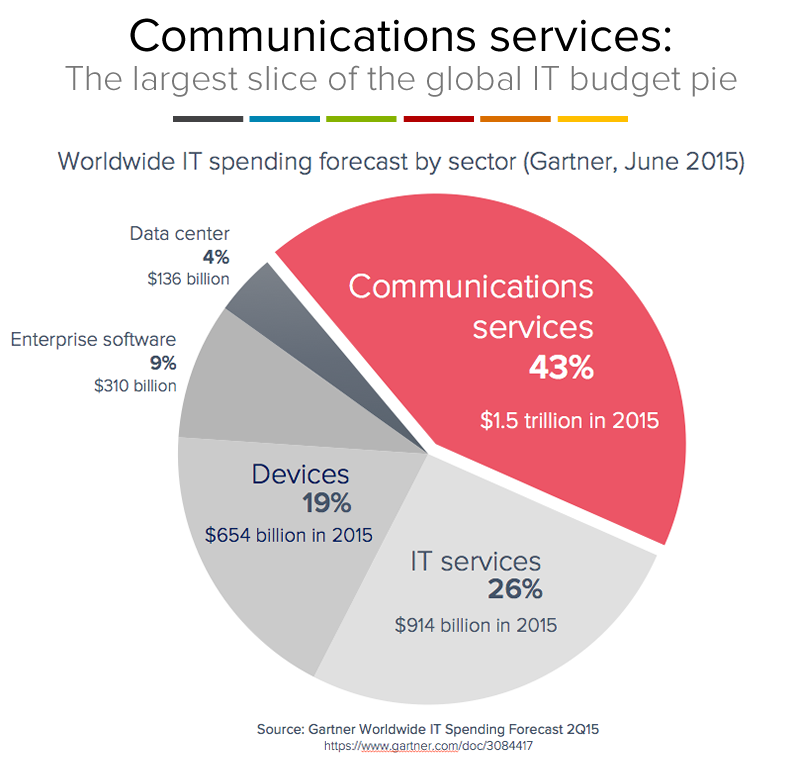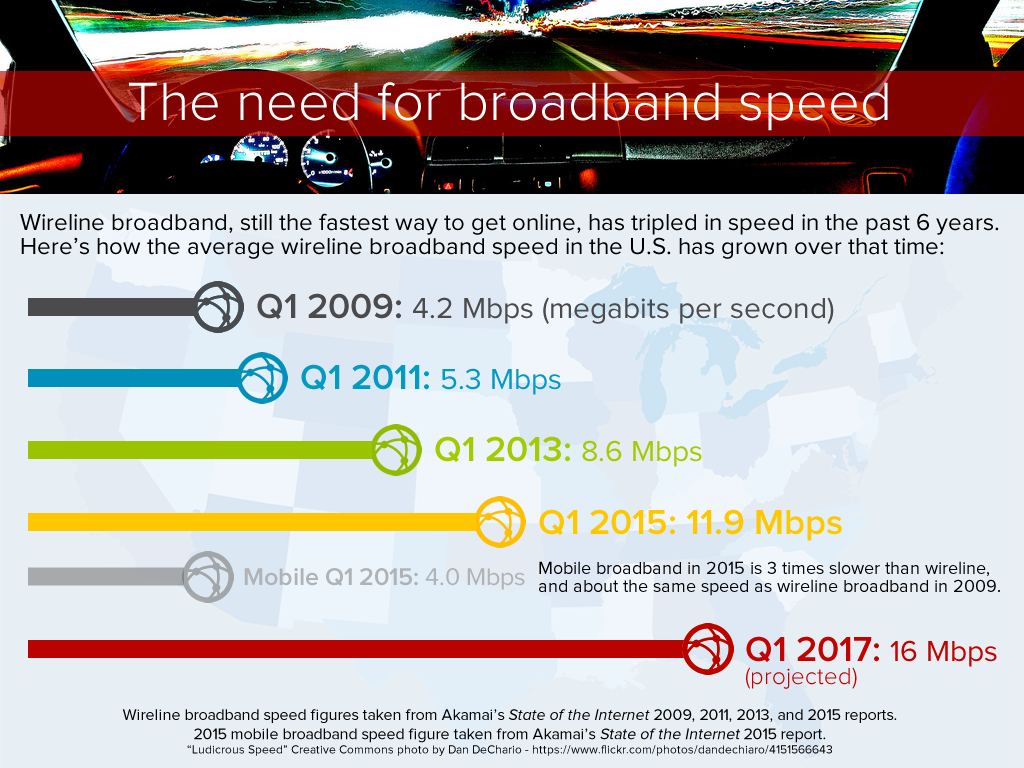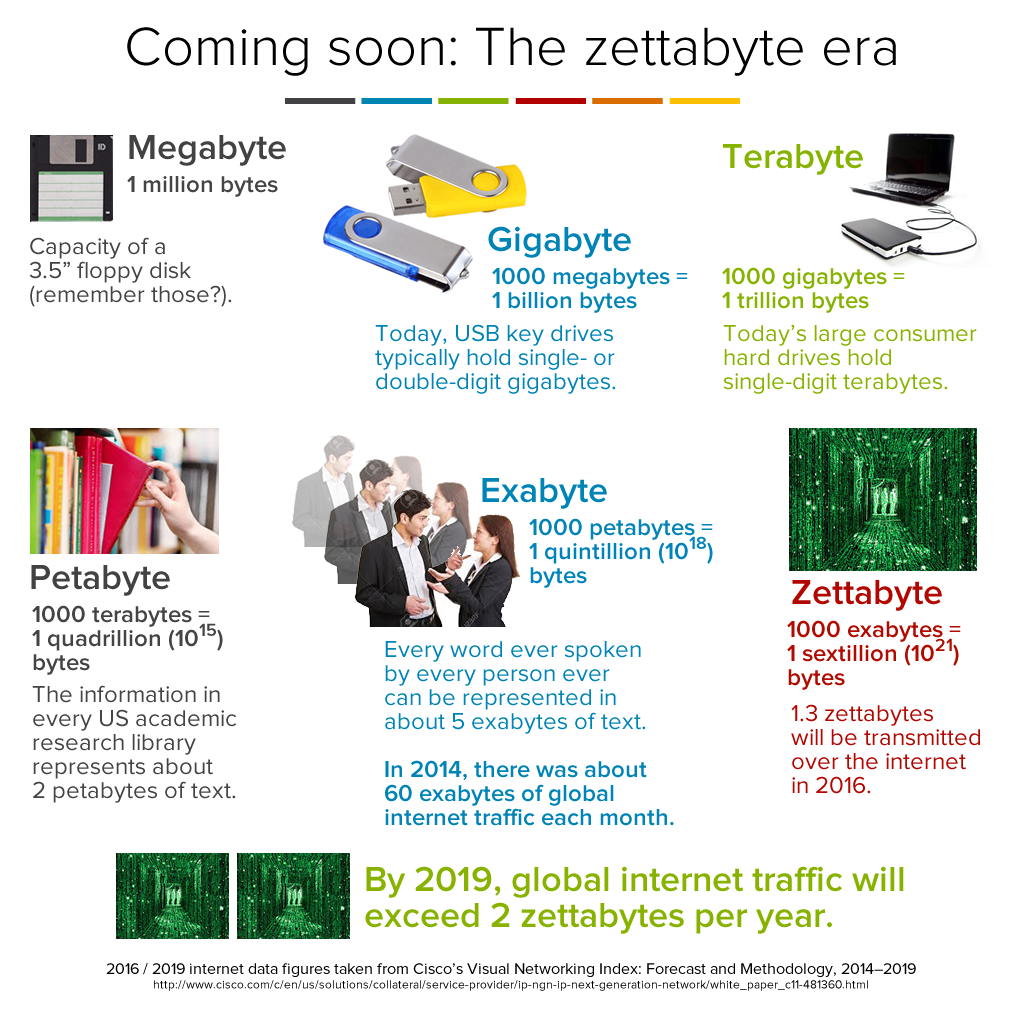If you’re the kind to keep up with the latest Xcode betas, you’ll want to go to the Xcode download page, because Apple have just released beta 6 of the upcoming Xcode 7! If you’ve been thinking about taking Swift 2 for a spin but have been holding off, you may want to try this one — we’re not far away from the GM release, and most of the changes seem to be bug fixes.
Category: Uncategorized
Here’s your deal of the day! If you’ve wanted to dramatically increase the storage on your Android device, needed to shoot a lot of video on your digital camera, or needed extra drive space on your laptop but don’t want to lug an external hard drive around, this deal’s for you. From now until the end of August 30th, Amazon has taken 40% off the $100 price tag for the older version of SanDisk’s Ultra 128GB UHS-I/Class 10 microSDXC memory card, knocking its price down to a mere $60. The card comes with an adapter so that it’ll fit into full-sized SD card slots (like those in your laptop or digital camera) as well as in microSD card slots like those in your Android smartphone or tablet.
Note that this is SanDisk’s older model of 128GB microSD card, with a maximum read speed of 48MB per second (and you can assume the write speed is slower). The newer model, which boasts a faster read speed of up to 80MB/second, normally sells for $150 and is currently listed on Amazon for $110.
On Tuesday, September 29th at 1:00 p.m. eastern (10:00 a.m. Pacific), GSG and Enterprise Mobile will host a webinar titled The Secrets Nobody Tells You About Dark Mobile. It’s free to attend, and you can register here.
In this webinar, Enterprise Mobile’s VP Sales Jay Gordon and GSG’s Platform Evangelist Joey deVilla will talk about that area of an organization’s mobile telecom environment that goes, unobserved, unknown, or unmanaged — the terra incognita that we call “Dark Mobile”. We look at the negative effects it has on a company’s…
- spending,
- management,
- security, and
- efficiency
Join us in this quick webinar (it’ll be about half an hour) as we look at the four kinds of Dark Mobile and how we can shed some light into this crucial area of your IT environment.
Alphabet explained
This chart is the quickest way to explain the companies under Larry Page and Sergei Brin’s new holding company, Alphabet:
Click the graphic to see it at full size.
I’ll bet their original motto was also “Don’t be evil”.
Larry Page has just announced that he’s creating a new holding company called Alphabet. In the latest post on Google’s official blog, he writes:
What is Alphabet? Alphabet is mostly a collection of companies. The largest of which, of course, is Google. This newer Google is a bit slimmed down, with the companies that are pretty far afield of our main Internet products contained in Alphabet instead. What do we mean by far afield? Good examples are our health efforts: Life Sciences (that works on the glucose-sensing contact lens), and Calico (focused on longevity). Fundamentally, we believe this allows us more management scale, as we can run things independently that aren’t very related. Alphabet is about businesses prospering through strong leaders and independence. In general, our model is to have a strong CEO who runs each business, with Sergey and me in service to them as needed. We will rigorously handle capital allocation and work to make sure each business is executing well. We’ll also make sure we have a great CEO for each business, and we’ll determine their compensation. In addition, with this new structure we plan to implement segment reporting for our Q4 results, where Google financials will be provided separately than those for the rest of Alphabet businesses as a whole.
Alphabet’s site is located at the clever URL abc.xyz:
…which makes it the second .xyz domain I know. Here’s the first:
If the Titanic sank today…
…the scene might look something like this:
Click the graphic to see it at full size.
The illustration was created by Pierre Brignaud. It won third place out of 200 submissions to the visual arts contest for the Montreal-based Just for Laughs comedy festival.
Does anyone know what won second and first place?
Big internet numbers
Still the biggest slice of the IT budget pie
Click the infographic to see it at full size.
Communications services will remain the largest part of the global IT budget, according to Gartner’s 2Q 2015 Worldwide IT spending forecast. They predict that it will account for $1.5 trillion, or 43% of the total $3.5 trillion expected to be spent on IT this year. Compared to the other segments, communications services’ share is:
- 40% larger than the next-largest segment, IT services
- More than twice the amount spent on devices, including mobile devices
- Over four times the share taken by enterprise software
- More than ten times the spend for data centers
Gartner reports that global IT spending in 2015 will be 5.5% lower than in 2014. Their analysts say it’s due to the rising U.S. dollar, and if you look at the figures in “constant currency” terms — that is, if you account for the fluctuations in exchange rates — the market is expected to grow by 2.5%. Changes in the value of the US dollar relative to other currencies affect all manner of spending worldwide, and IT is no exception. Vendors who place a high priority on protecting their margins adjust their pricing in in response to currency fluctuations, which in turn affects IT purchase decisions worldwide.
Gartner’s report also points out that of the five IT spending segments, communications is experiencing the strongest decline. They attribute this to price erosion and an increasingly competitive market.
Wired broadband: Speeding up steadily
Click the infographic to see it at full size.
If you’re reading this article, the odds are pretty good that you’re doing so with the aid of wireline broadband. Even if you’re reading this with your mobile device, you may be doing so through one of the 50 million publicly-accessible wifi hotspots worldwide, or through your office or home wifi access point (of which there are hundreds of millions —161 million wifi base stations were shipped in 2013).
According to Akamai’s Q1 2015 State of the Internet report, wireline broadband speeds in the U.S. have tripled since 2009. In 2009, the average speed was 4.2 Mbps (megabits per second), and as of the first quarter of 2015, if Speedtest.net reports that your connection is faster than 11.9 Mbps, you’re doing better than the present average.
On average, wireline broadband is three times faster than cellular broadband, whose average speed in the U.S. is 4.0 Mbps. In other words, average cellular broadband speed today is the same as 2009’s average wired broadband speed. That makes for yet another dimension where 2015’s mobile devices have specs similar to 2009’s middle-of-the-road laptops.
In case you were wondering what these speeds mean in practical terms, the table below should help put things into perspective:
| Speed (in Mbps) |
Email a picture (1.5 MB, or 12 million bits) |
Download a song or long PowerPoint presentation (8 MB, or 64 million bits) |
Download an ebook or short video (20 MB, or 160 million bits) |
Download a 720p TV 30-minute TV episode (500 MB, or 4 billion bits) |
|---|---|---|---|---|
| 20 | less than 1 second | <4 seconds | 8 seconds | 3.5 minutes |
| 10 | 2 seconds | 7 seconds | 16 seconds | 7 minutes |
| 5 | 3 seconds | 14 seconds | 32 seconds | 13 minutes |
| 1 | 12 seconds | 64 seconds | 160 seconds | 1 hour |
On the edge of the zettabyte era
Click the infographic to see it at full size.
The faster the internet becomes, whether in wireline or wireless form, the more data we’ll send and receive. According to Cisco’s Visual Networking Index: Forecast and Methodology 2014 – 2019 report, global internet traffic has grown by over five times in the past five years. The next five years should continued growth at a slightly slower pace — about three times.
This growth has led us to the point that the total amount of data sent over the net this year can be measured in hundreds of exabytes, where an exabyte is 1 quintillion (1018) bytes. Next year, that amount will cross over into the next “illion”: in 2016, it’s expected that 1.3 zettabytes (where a zettabyte is a thousand quintillion, or 1021 bytes) will be transmitted over the net. We’ve included the infographic above to help you get a better grasp of the size of these numbers.
You can be certain that network carriers are planning for this growth, and you should be doing the same.












